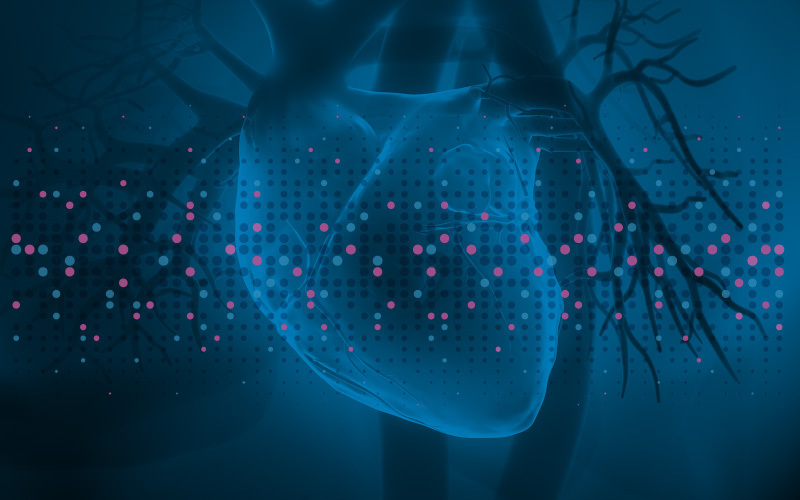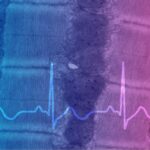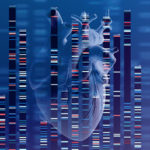A new view of heart health: Mutations accumulate in the heart starting in childhood

Why do so many people get heart disease when they get older? We know that factors like high blood pressure or high cholesterol contribute to heart disease risk, but they don’t explain all cases. A first-of-its-kind study from Boston Children’s Hospital offers a new lens on heart health. It shows that the cells of our heart muscle accumulate new genetic mutations starting in childhood — and lose the ability to repair them. Coupled with other risk factors, they could potentially contribute to disease over time.
“As you age and get more mutations, you’re adding deleterious effects that might push the heart past a tipping point into disease,” says Dr. Ming Hui Chen, a cardiologist in Boston Children’s Division of Genetics and Genomics and Department of Cardiology, who oversaw the research. “It may get to a point where so much DNA is damaged that the heart can no longer beat well.”
Cataloguing new mutations in the heart
The research team, led by Dr. Sangita Choudhury and Dr. August Yue Huang, in the Division of Genetics and Genomics, took a deep dive into the genetics of heart muscle. They studied cells from 12 children and adults across the age spectrum — from infancy to 82 years — who had died from causes unrelated to heart disease.
In total, they sequenced the complete genomes of 56 individual heart muscle cells, known as cardiomyocytes. They then compared the number of new, non-inherited mutations, known as somatic mutations, in cells of different ages.
As you age and get more mutations, you’re adding deleterious effects that might push the heart past a tipping point into disease.
The older the individual, the more single-nucleotide DNA variants (changes in the A, T, C, and G building blocks) their heart cells had. The pattern of these mutations suggested that many of them were caused by oxidative damage.
“Because the heart is always pumping, it uses a lot of energy,” explains Dr. Chen. “This energy production creates chemical byproducts known as reactive oxygen species or ROS. When levels of ROS get too high, they can damage DNA.”

Adding insult to injury
Some of the newly acquired mutations interfered with genes involved in basic cell functions. For example, some affected the cytoskeleton, the scaffolding that gives cells their structure.
But making matters even worse, other mutations interfered with pathways cells normally use to fix DNA damage.
“Aging appears to impact DNA repair mechanisms,” says Dr. Choudhury. “These mechanisms may be overwhelmed if there is enough oxidative damage. This is the first time new mutations have been looked at in the human heart at the single-cell level.”
In fact, the researchers were struck by how fast heart cells acquired mutations. Because heart cells don’t continue to divide — a time in a cell’s life cycle when the DNA is more exposed — many people thought they are less susceptible to mutations. But the team’s analysis suggests that mutations accumulate in heart cells as fast or faster than in other cell types — including some cells that divide. The team estimates that on average, starting in infancy, each heart cell gains more than 100 new mutations every year.
This is the first time new mutations have been looked at in the human heart at the single-cell level.
The technically difficult study drew on single-cell whole genome sequencing and bioinformatics techniques pioneered in the laboratory of Dr. Christopher Walsh at Boston Children’s, of which Drs. Choudhury and Huang are members. The Walsh lab focuses on neuroscience, and recently used the new methods to document a parallel phenomenon in the brain: the accumulation of mutations in neurons in people with Alzheimer’s disease.
Future goal: Exploring mutations in cardiovascular disease
The researchers note that their study was not designed to investigate other types of mutations beyond single-nucleotide variants, such as DNA insertions or deletions. Also, because they looked at healthy heart cells, the study doesn’t prove that the mutations are involved in heart disease — it just shows that they accumulate with time.
In the future, the researchers plan to look at mutations in tissue from patients with different cardiovascular diseases. As a first step in this direction, Dr. Chen plans to collect data from cancer patients who have heart disease. Her research focuses on how chest radiation and chemotherapy for cancer affect cardiac health.
“We also want to look at different cell types in the heart,” says Dr. Choudhury. “We’ve only touched the tip of the iceberg.”
The study was published August 11 in the journal Nature Aging. Chen, Walsh, and Dr. Eunjung Alice Lee were co-senior investigators.
Explore clinical studies at the Heart Center.
Related Posts :
-

‘Heart on a chip’ suggests a surprising treatment for a rare genetic disease
It was the variability that intrigued pediatric cardiologist William Pu, MD, about his patient with heart failure. The boy ...
-

A new lens on cardiac surgery could help prevent arrhythmia
Sometimes, a change in perspective can lead to a medical breakthrough. A type of microscopy typically used to detect cancer ...
-

Getting to the heart of heart muscle function
Every heart muscle cell, or cardiomyocyte, is studded with tiny, intricate structures called dyads. The dyads are like orchestra conductors: ...
-

Coordinated care and research for genetic cardiovascular disorders
Genetic cardiovascular disease in children sometimes comes to light in a crisis — a sudden collapse, sudden breathing difficulty, a sudden ...





